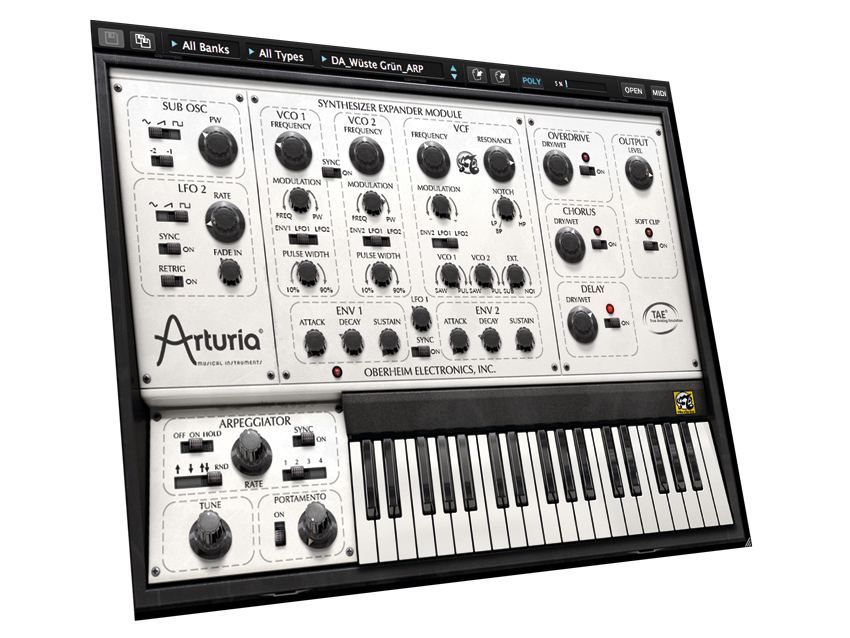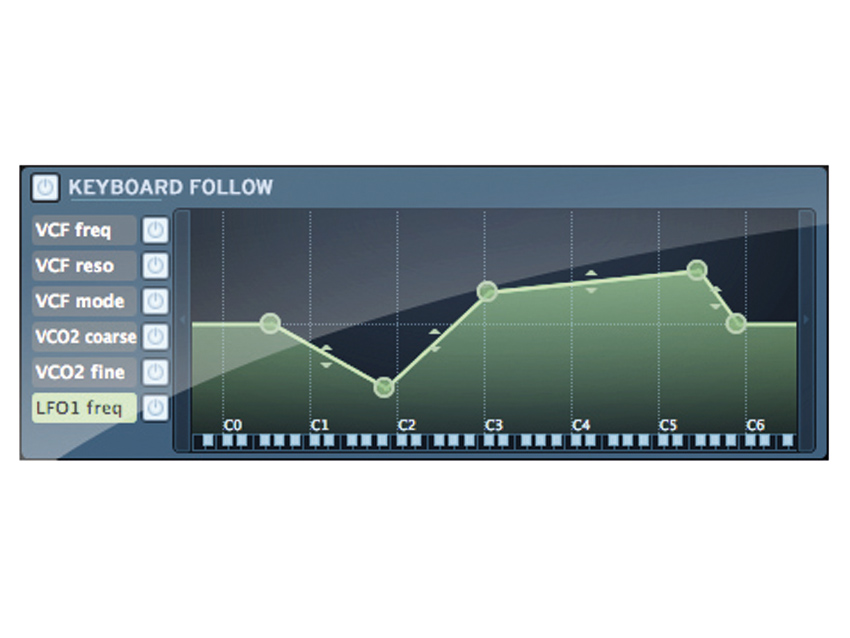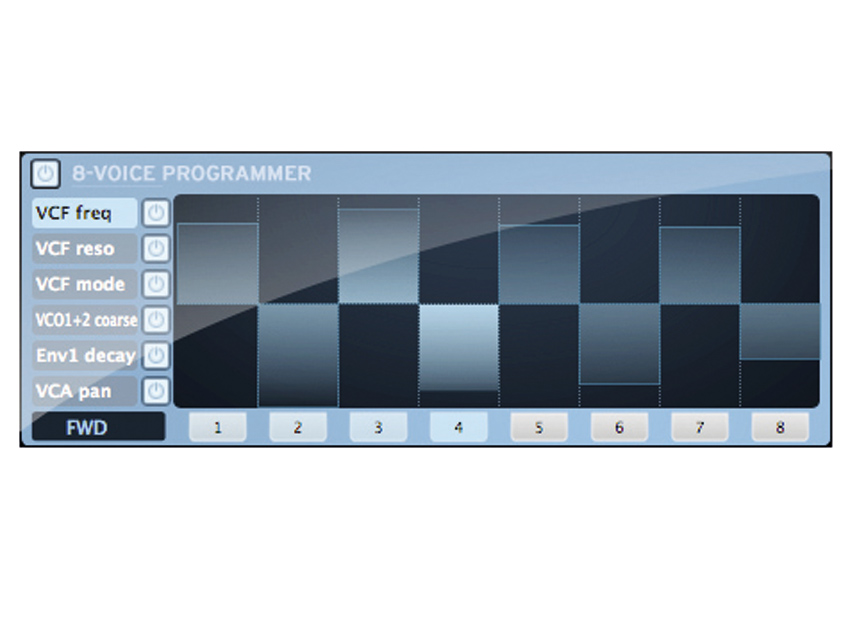MusicRadar Verdict
Not just an emulation of a classic, this is a great synth in its own right.
Pros
- +
Up to eight-voice polyphonic option; extensive additions to the basic SEM architecture.
Cons
- -
Not much.
MusicRadar's got your back

Arturia Oberheim SEM V

Arturia Oberheim SEM V

Arturia Oberheim SEM V
The Oberheim SEM is an undisputed classic. On sale for five years from 1974, its popularity remains so high that its septuagenarian designer re-established production just over a year ago.
When we tested the re-issue in October 2010, we noted that nobody had yet designed a decent software emulation and hoped that someone would come up with a digital clone. French software experts Arturia must have been reading our pleas, because the SEM V virtual instrument is exactly that: a faithful reproduction of the SEM sound, with a few modern twists to make it even more versatile.
"Switching the SEM V to Poly mode instantly creates the sound of up to eight SEMs hooked together."
Architecture
The SEM is legendary precisely because it does things differently to most other synths. The basic synth architecture is fairly standard: the SEM is a monophonic synth with two oscillators (pulse and sawtooth waves), two ADSD envelope generators and a sine wave LFO.
The main selling point is the highly unusual voltage-controlled filter. Having set out to design a synth that would complement the bestsellers on the market - Minimoogs, ARP 2600s and so on - Tom Oberheim settled on a unique filter to set the SEM apart.
The 12dB/oct design is switchable between low-pass, high-pass and band-pass modes. Multimode filters are fairly common nowadays, but the SEM's state-variable design allows it to blend seamlessly from low-pass to high-pass through every possible shape of notch filter in between.
Needless to say, the SEM V's architecture is an accurate recreation of the SEM's set-up. Tune the VCOs, apply some envelope modulation to the filter and you're immediately in classic SEM territory, wallowing in fat basses and warm, funky leads.
A knob-for-knob recreation of the SEM would have been enough to please plenty of Oberheim fans, but Arturia has taken the concept to another level with the SEM V, adding numerous features in order to bring the basic design into line with modern expectations.
A second LFO adds further sine and square waves; a sub-oscillator provides sine, saw or pulse waves at -1 or -2 octaves; and portamento and a simple arpeggiator section provide additional performance options.
The tweaks don't make the basic emulation any less authentic - you can ignore them if you want the original experience - but they certainly expand on the sonic range of the SEM while retaining its distinctive character.
Poly technique
Speaking of expanding the SEM's range, did we mention that the SEM V is polyphonic? In some cases - most notably Minimoog emulations - we're not entirely convinced by the effectiveness of turning ballsy monophonic synths into overpowering polyphonic monsters, but it makes perfect sense with the SEM, because the original module formed the basis of Oberheim's two-voice, four-voice and eight-voice polysynths. Switching the SEM V to Poly mode using the button in the main editing window instantly creates the sound of up to eight SEMs hooked together.
One of the main quirks of the four- and eight-voice synths was that their modular design - each synth was constructed from multiple SEMs - could lead to slight differences between the timbres of each voice. The SEM V is effectively multi-timbral, with the eight-voice programmer in the upper panel allowing voices to be edited independently.
With Poly mode activated, each additional note triggers a new voice, either in set order (forward, backward or forward-backward) or at random. Given the general similarities between the SEM and the voice architecture of early Oberheim polysynths, Poly mode is effective for creating a huge range of classic Oberheim sounds, from belting brass patches to silky retro strings.
With the sonic basics in place, the level of detail in the SEM V's design helps to maximise flexibility and versatility. Modulation routing is handled via the matrix in the hidden upper panel, but it's the keyboard follow section hidden alongside it that really deserves a special mention. The intuitive graphical interface allows complex keyboard follow curves to be created for parameters such as VCF cutoff and resonance, oscillator tuning and LFO rate. In conjunction with the mod matrix, it facilitates some seriously creative setups.
Preset party
We don't often focus too much attention on presets, but the SEM V's whopping collection of 500 factory patches - plus 14 init settings and basic templates - deserves closer inspection. Arturia's sound designers have coaxed a staggering range of tones from the software, and there are sounds that could slot straight into just about any style imaginable, from West Coast Hip Hop to a good waltz.
The presets are mainly helpful, however, because they can be used to explore the SEM V's more advanced options.
Some of the software's editing features - notably the eight-voice programmer - might have even the most experienced SEM synthesist scratching their head, but a quick tour of the presets reveals how everything works and ably demonstrates the huge range of fantastic sounds which can be produced. All credit to Arturia and their team for creating a factory preset bank which genuinely shows off the potential of the software.
Conclusion
The eight-voice programmer can be used in Mono mode, enabling different timbres or tunings to be triggered with each key press. With subtle variations in each voice, analogue-style inaccuracy can be created.
Alternatively, more substantial differences in voice tuning or filter settings can be used to create step sequencing or sample-and-hold-style effects. Finally, basic overdrive, chorus and delay effects are also edited in the upper panel, with their respective wet/dry mixes adjusted in the main window. Purists may bemoan Arturia's inclusion of effects on vintage synth emulations, but they seem like a harmless addition to us. After all, you don't have to use them if you don't like them.
As a straight emulation of the classic SEM sound, the SEM V ticks all the boxes, but the software has so much more to offer when you explore it in greater depth: small but effective additions to the SEM design, advanced voice editing features and, of course, an excellent polyphonic mode. The range of sounds available is much greater than the SEM name might suggest, covering classic Oberheim ground and much more, and this makes the SEM V a great synth in its own right.
Future Music is the number one magazine for today's producers. Packed with technique and technology we'll help you make great new music. All-access artist interviews, in-depth gear reviews, essential production tutorials and much more. Every marvellous monthly edition features reliable reviews of the latest and greatest hardware and software technology and techniques, unparalleled advice, in-depth interviews, sensational free samples and so much more to improve the experience and outcome of your music-making.
With its latest free update, Ableton has finally turned Note into the app I always wanted it to be
Technically capable, but struggle to make your tunes sound musical? 5 simple music theory hacks to make your tracks stand out
"Despite its size, it delivers impressive audio quality and premium functions as well as featuring a good selection of inspired sounds": Roland GO:Piano 88PX review










